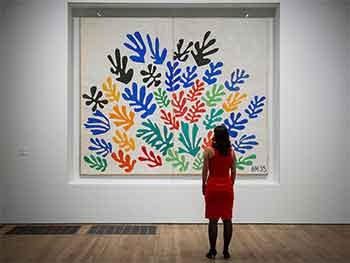Giovanni Boldini’s alluring women
Francesco Carelli, University Milan, Rome
In the year of the tenth anniversary of its opening, the magnificent venue of the Reggia di Venaria ( Turin ) hosts a major Giovanni Boldini exhibition from 29 July 2017 to 28 January 2018, with more than 115 work.
Alluring women, sumptuous, swishing gowns, salons, and la Belle Époque make up the passionate world of Boldini, the brilliant painter who was uniquely able to capture the rarified atmosphere of that extraordinary period. Literature, fashion, music, luxury, art and bistrot all intertwined in the sensual rhythm of the can can and generated an extraordinary social and civic revitalization.
This comprehensive Giovanni Boldini exhibition is constructed on the basis of both chronological and thematic narratives; a large selection of works traces the artist’s activity over the years but is divided into four sections representing four underlying themes in order to convey the evolution of the master’s expressive language. Regardless, throughout his career, Boldini created works that express and exalt female beauty, revealing the intimate, mysterious soul of aristocratic women of the period.
Not limited to the international experience of Boldini, who quickly abandoned the Italian avantgarde Macchiaioli, the exhibition also features 26 worksby his contemporaries Cristiano Bandi, Giuseppe De Nittis, Telemaco Signorini, EttoreTito, Federico Zandomeneghi.
Among the many renowned paintings on exhibit (c. 1892), the guest of honor is the masterpiece emblematic of the entire Belle Époque, the large-scale Portrait of Donna Franca Florio , painted between 1901 and 1924. These works are on loan from major international museums, including Musée des Beaux-Arts of Tours, Galleria Civica d’Arte Moderna e Contemporanea di Torino, Raccolte Frugone – Villa Grimaldi di Fassio of Genova, Collezioni Artistiche. Banca Carige, Museo nazionale di Capodimonte,and from several prestigious private collections that are rarely available to the public.
Boldini’s study of the fleeting moment is crystallized in the colours in his works – oils, pastels, and quick pencil strokes – works that have endured through the centuries; like one of Proust’s madeleines, they perform the miracle of transporting us back to the enchanted days of the Belle Époque.
Boldini was not only a major player in that unique period nor only a brilliant precursor of 20th-century modernity; he was also an artist who expressed and exalted female beauty, revealing the most intimate, mysterious soul of aristocratic women of that period, whom he called “fragile icons”.
He was like a perfect speck of dust dispersed in the universe of history, and yet he has become immortal. This may explain why Gertrude Stein claimed that he was the best painter of the 19th century.
In the Reggia di Venaria, alongside Boldini’s absolute masterpieces so familiar to the public, such as the iconic portraits of Emiliana Concha de Ossa and Gabrielle de Rasty , to name a few, there are also nudes and city views. In each case, one can feel Boldini’s immense energy and unmistakable expressive power.
The exhibition reconstructs step by step the brilliant trajectory of this great Italian artist who made his home in Paris. It is divided into 4 sections: The New Light of the Macchia (1864–1870);The Maison Goupil, Midway between Fashion and Impressionism (1871−1878);The Pursuit of the Fleeting Moment(1879–1891) and
The Portrait of The Belle Époque (1892–1924).
THE UNPUBLISHED LETTERS
An important chapter of the catalogue published by Skira is devoted to forty letters from Boldini made public here for the first time. This is nearly the whole group of letters that Boldini, in his capacity as president of the Art Commission for the Italian pavilion at the 1889 Exposition Universelle in Paris, wrote to Telemaco Signorini in
Florence. Boldini requests the latter to perform the delicate task of choosing and sending to Paris the works by the Tuscan artists participating in the event. The letters are dated between February and April 1889 and concern the preparations for the exhibition that is to open on 6 May 1889. They evince the two friends’ constant commitment to the exhibition’s success and deal with the choice of works, the practicalities of their transportation from Italy to France, their arrangement in the rooms and solving the many problems that arise. They also contain private and professional comments, such as remarks about their fellow artists, diatribes in artistic circles and – especially in Boldini’s case – have a vein of irony and sagacity.
LIBERTY SETTING
The exhibition is enriched with Liberty objects and furniture, generously loaned by the Fondazione Arte Nova, giving an impression of the graceful homes of the early 20th century. Meanwhile, thanks to a generous loan from the Museo Nazionale del Cinema edell’Archivio Nazionale Cinema d’Impresa-Centro Sperimentale di Cinematografia, visitors canrelive the magic atmosphere of the twilight of the Belle Époque through excerpts of silent films from the 1910s.



